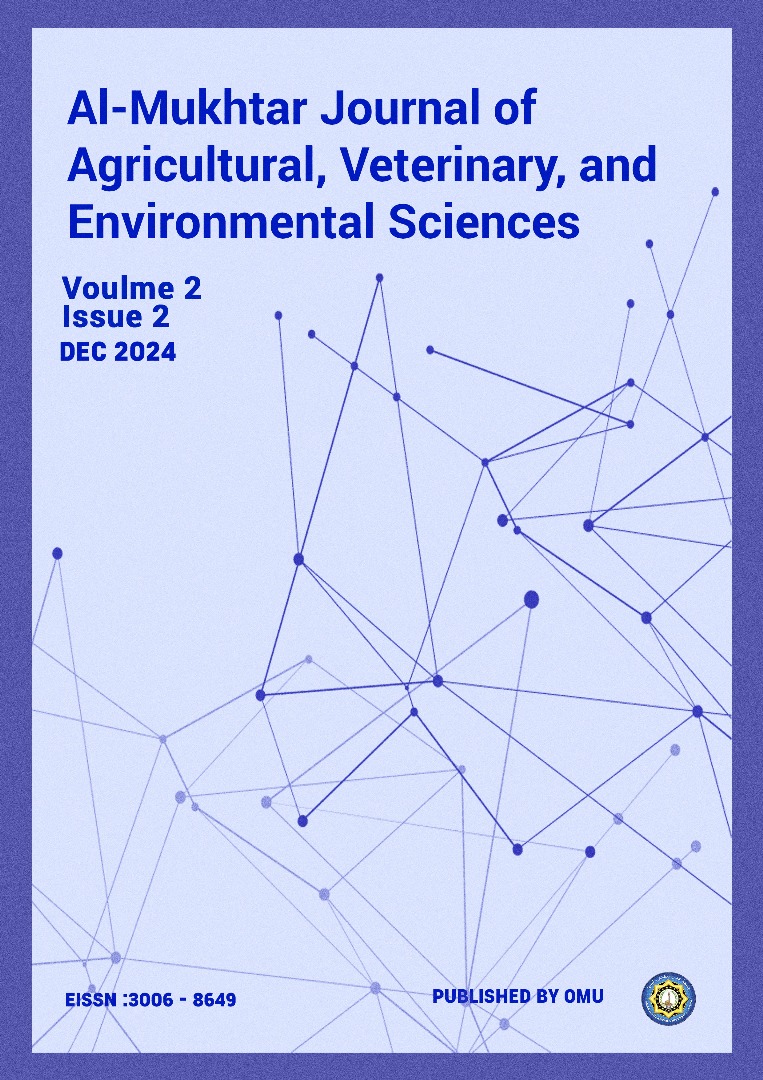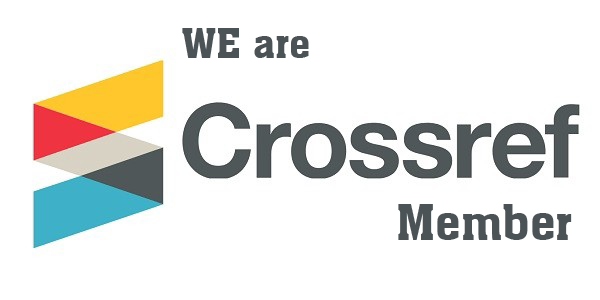Biochemical study of three legume types by vitamin B12 and aqueous extracts of Cucurbita pepo L. leaves influence
DOI:
https://doi.org/10.54172/7bmg0e37Keywords:
Cucurbita Pepo, Peroxidase, Catalase, Carbohydrate, B12Abstract
This study was conducted in the Department of Biology, College of Science, University of Mosul, and included a greenhouse experiment to investigate the allelopathic effects of Cucurbita pepo L. (squash) leaf aqueous extracts at concentrations (2% and 6% w/v), vitamin B12 at concentrations (2 and 6 ppm), and their combined effects on certain biochemical characteristics of seedlings from three leguminous crops (chickpeas, cowpeas, and beans). The study assessed chlorophyll content, carbohydrate content, and the activity of antioxidant enzymes (catalase (CAT) and peroxidase (POD)). The results revealed varied responses among the tested species to the applied treatments. However, the most notable observation was the stimulatory effect of vitamin B12, which significantly enhanced the studied traits and outperformed the squash leaf aqueous extract treatment. Chickpea plants exhibited a decrease in chlorophyll content, accompanied by a reduction in carbohydrate levels across most treatments. The results further showed that the combined application of the aqueous extract and vitamin increased chlorophyll content while reducing carbohydrate levels in both cowpeas and beans. Additionally, an increase in antioxidant enzyme activity was observed in plants treated with the squash leaf extract, indicating elevated reactive oxygen species (ROS) levels due to the effect of released allelopathic compounds. It was evident that the 2% concentration was more effective in enhancing CAT and POD enzyme activity, whereas their effectiveness declined at the 6% concentration. Furthermore, vitamin B12 led to an increase in CAT and POD enzyme activity across all tested leguminous crops.
References
Abbas, M.M. & W. S. Hussain.)2020(. Morpho-Anatomical Responses of Broad bean and Pea to Allelopathic effects of celery residues. World Wide Journal of Multidisciplinary Re-search and Development, 6(8): 55-58.
Aebi, H. (1974). Catalase. In Methods of enzymatic analysis. Academic Press, New York, USA.2: 673-684.
Boubakri, H., M. Gargouri, A. Mliki, F. Brini, J. Chong, M. Jbara, .)2016( . Vitamins for enhanc-ing plant resistance. Journal of Planta, 244(3): 529-543.
Buckman, H. O., & N. C. Brady.)1960(. Reaction of Saline and Alkali Soil. The Nature and Proper-ties of Soils. 6th Ed. (The Macmillan Company, New York), pp.567.
El-Shora, H. M., A. El-Gawad, M. Ahmed.)2014(. Evaluation of allelopathic potential of Rumex dentatus root extract and allelochemicals on Cicer arietinum. Journal of Stress Physiolo-gy and Biochemistry, 10(1): 167-180.
Herbert, D., P. J. Phillips& R. E. Strange.)1971(. Determination of total carbohydrates. Method In Microbiology., 58:209-344.
Kebede, E. )2020(. Grain legumes production and productivity in Ethiopian smallholder agricul-tural system, contribution to livelihoods and the way forward. Cogent Food and Agricul-ture, 6(1):1-21.
Keshavarz, H., and R. S. G. Moghadam .)2017( . Seed priming with cobalamin (vitamin B12) pro-vides significant protection against salinity stress in the common bean. Journal of Rhizo-sphere, 3: 143-149.
Knudson, L. L., T. W. Tibbitts, G. E. Edwards.)1977(. Measurement of ozone injury by determi-nation of leaf chlorophyll concentration. Journal of Plant physiology, 60(4): 606-608.
Nezih, M.)1985(. The peroxidase enzyme activity of some vegetable and its resistance to heat. Journal of Food Agriculture, 36(9): 877-880.
Pitotti, A., B.E. Elizalde, M. Anese .)1995( .Effect of caramelizetion and mail lard reaction prod-ucts on peroxidase activity. Journal of Food Biochemistry, 18: 445-457.
Politycka, B. )2004(. Cell wall peroxidases in cucumber roots induced by phenolic allelochemi-cals. Journal of Allelopathy , 13: 29-36.
Ratnam, N., M. Naijibullah, M. D. Ibrahim .)2017(. A review on Cucurbita pepo. International Journal Pharmacy Phytochemical Research, 9:1190-4.
Scavo, A., & G. Mauromicale .)2021( . Crop allelopathy for sustainable weed management in agroecosystems: Knowing the present with a view to the future. Journal of Agronomy, 11(11): 2104.
Soln, K., M. Klemenčič, & J. D. Koce .)2022( . Plant cell responses to allelopathy: From oxida-tive stress to programmed cell death. Protoplasma: 1-14.
Spinneker, A., R. Sola, V. Lemmen, M. J. Castillo, K. Pietrzik, M. Gonzalez-Gross.)2007(. Vita-min B6 status, deficiency and its consequences-an overview. Journal of Nutricion hospi-talaria, 22(1): 7-24.
Staszek, P., U. Krasuska, K. Ciacka, and A. Gniazdowska .)2021(. ROS Metabolism Perturbation as an Element of Mode of Action of Allelochemicals. Antioxidants, 10(11): 1648
Wintermans, J. F. G. M., & A. S. De Mots. )1965(.Spectrophotometric characteristics of chloro-phylls a and b and their phenophytins in ethanol. Biochimica et Biophysica Acta (BBA)-Biophysics including Photosynthesis, 109(2): 448-453.
Zhang, G., C. Yang, R. Liu, and W. Ni. )2019(. Effects of three phenolic compounds on mitochon-drial function and root vigor of cotton (Gossypium hirsutum L.) seedling roots. Acta Physiologiae Plantarum, 41(5): 1-10.
Downloads
Published
License
Copyright (c) 2024 Wasan salih Hussain, Ban Abdul-Aziz Edan, Noor Al-huda Ahmad Mohammed Taher (Author)

This work is licensed under a Creative Commons Attribution-NonCommercial 4.0 International License.













